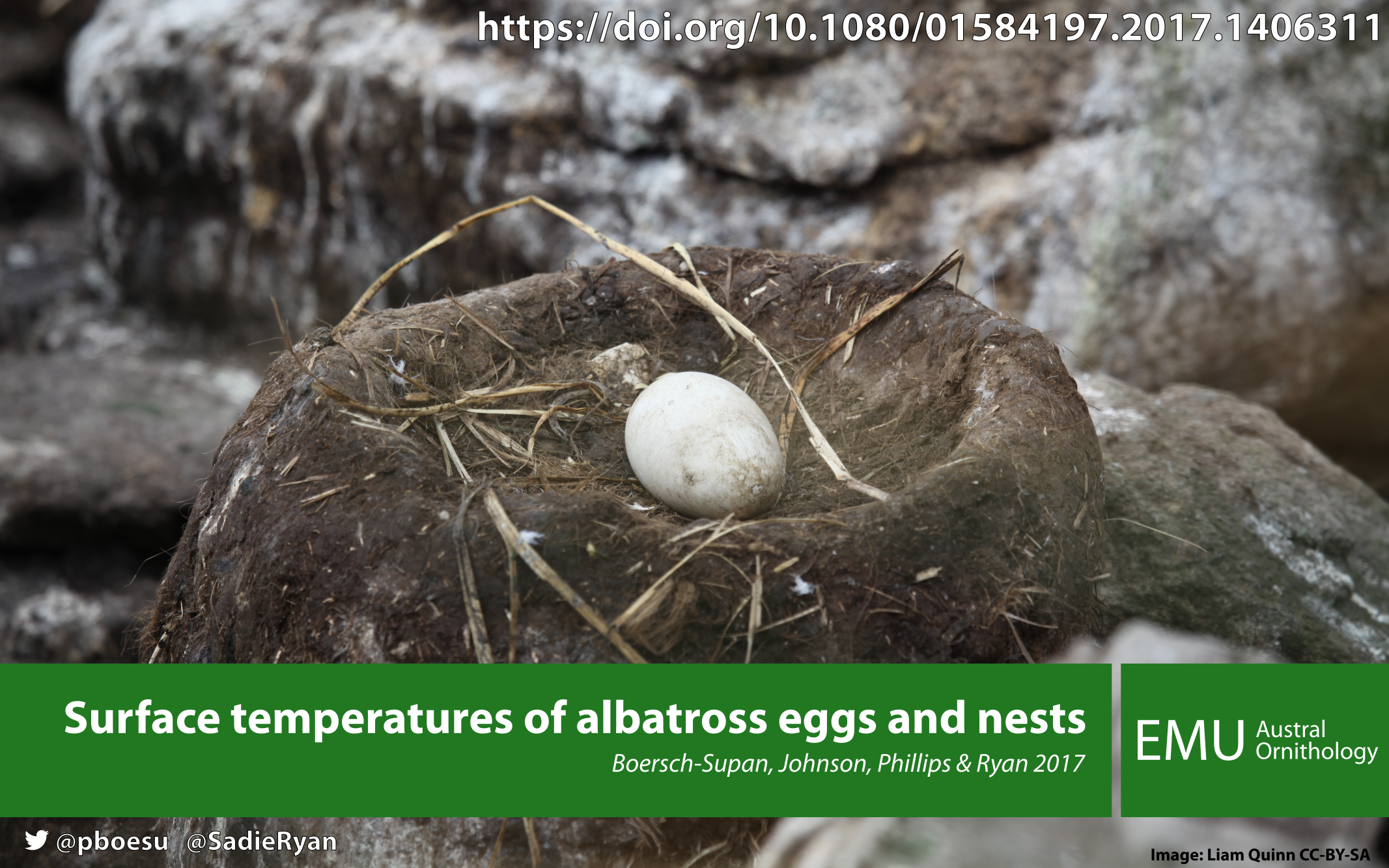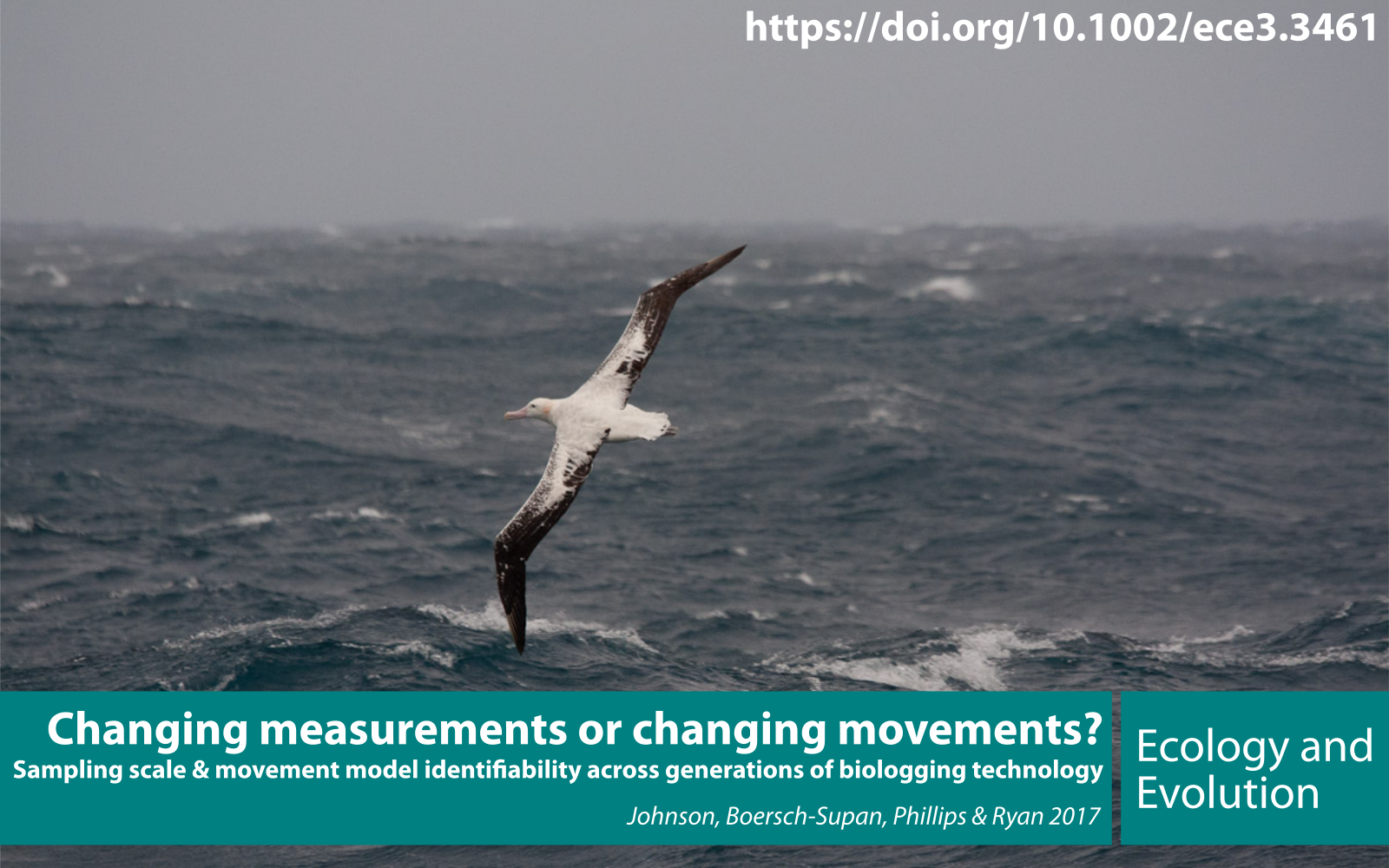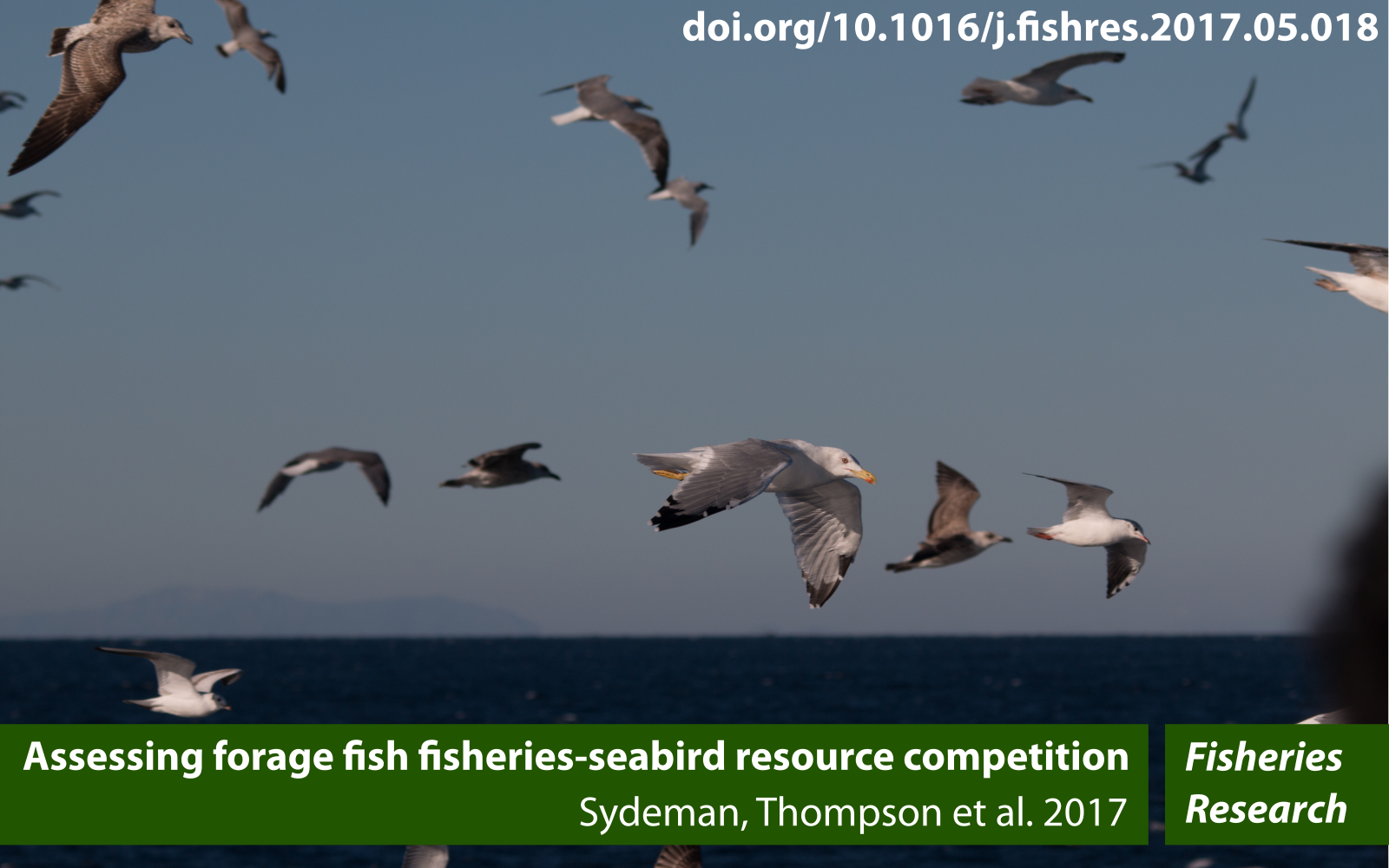25 Jan 2018
Philipp Boersch-Supan
Tweet this!
I’m thrilled to announce that I will be moving back to the United Kingdom this Spring to join the British Trust for Ornithology as an Ecological Statistician.
🐦📈🦆🖥🐣📊🦉💻🦅📉🐧
04 Dec 2017
Philipp Boersch-Supan
seabirds pelagic ecology papers
Tweet this!

New paper published on egg temperature ontogenies in subantarctic albatrosses:
Knowledge of thermal traits is essential for understanding and modelling physiological responses to environmental change. Egg temperatures are poorly studied in most tubenose species. Our new study Surface temperatures of albatross eggs and nests fills a part of this data gap.
We used a contactless infrared thermometer to measure egg and nest surface temperatures throughout the incubation period for four albatross species at Bird Island, South Georgia. Observed egg temperatures were lower than the egg temperatures reported for most Procellariiformes. Temperature gradients across viable eggs declined by up to 9°C during incubation, reflecting increased embryonic circulation and metabolic heat production. This suggests that bioenergetic models should not assume constant egg temperatures during embryo development. Non-viable (addled) eggs could be identified by large temperature gradients in late incubation, indicating that infrared thermometry can be used to determine whether the embryo has died or the egg is infertile in monitoring and managed breeding (e.g. translocation) programmes. Egg temperatures were correlated with ground temperatures, indicating that incubated eggs are vulnerable to environmental variability.
This study was conducted in collaboration with Leah Johnson, Richard Phillips, and Sadie Ryan.
23 Nov 2017
Philipp Boersch-Supan
paper disease ecology
Tweet this!
A new paper with the QDEC Lab and Ecuadorian collaborators on human biting rates of three mosquito taxa has just been published in Malarie Journal: Quantifying Seasonal and Diel Variation in Anopheline and Culex Human Biting Rates in Southern Ecuador.
Our paper uses hurdle models to determine if biting activity was fundamentally different for different taxa, and to identify temporal and spatial factors influencing bite rate. Biting trends varied significantly among species and time. All taxa exhibited exophagic feeding behavior, and outdoor locations increased both the odds and incidence of bites across taxa.
04 Oct 2017
Philipp Boersch-Supan
seabirds pelagic ecology papers
Tweet this!
New paper published on model and parameter identifiability in random walk models:
Our new paper Changing measurements or changing movements? Sampling scale and movement model identifiability across generations of biologging technology asks the question whether it is possible to compare flight-length data obtained decades apart by different generations of biologging technology.
We found that care must be taken when comparing data collected at differing timescales, even when using inference procedures that incorporate the observational process, as model selection and parameter estimation may be biased. As a result comparisons may only be valid when degrading all data to match the lowest resolution in a set.
This study was led by Leah Johnson and conducted in collaboration with Sadie Ryan, Richard Phillips, and myself.

29 Jun 2017
Philipp Boersch-Supan
seabirds pelagic ecology papers
Tweet this!
New paper published on resource competition between seabirds and fisheries:
Best Practices for Assessing Forage Fish Fisheries - Seabird Resource Competition originated out of two workshops following the 2nd World Seabird Conference in 2015. The paper reviews approaches used to study fisheries−seabird resource competition, highlights strengths and weaknesses of observational and modelling approaches, and outlines best practices for future studies of this complex issue.
This collaborative effort of 29 authors was lead by Bill Sydeman and Sarah Ann Thompson from the Farallon Institute.



